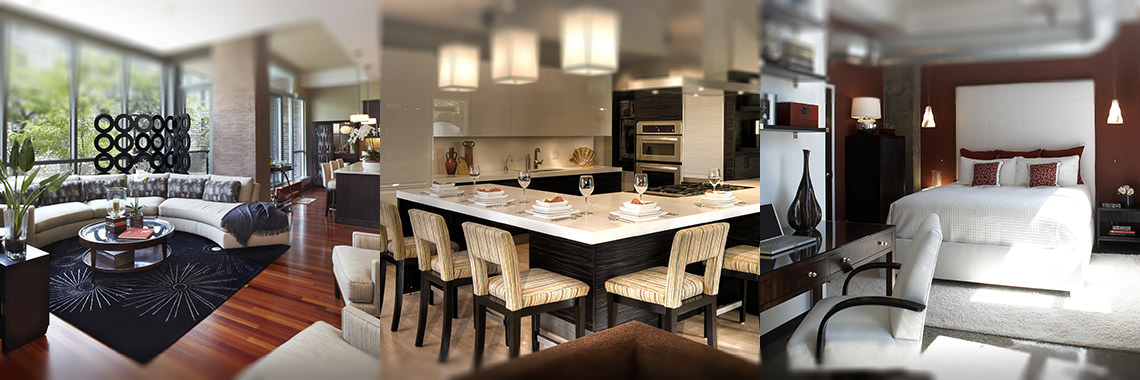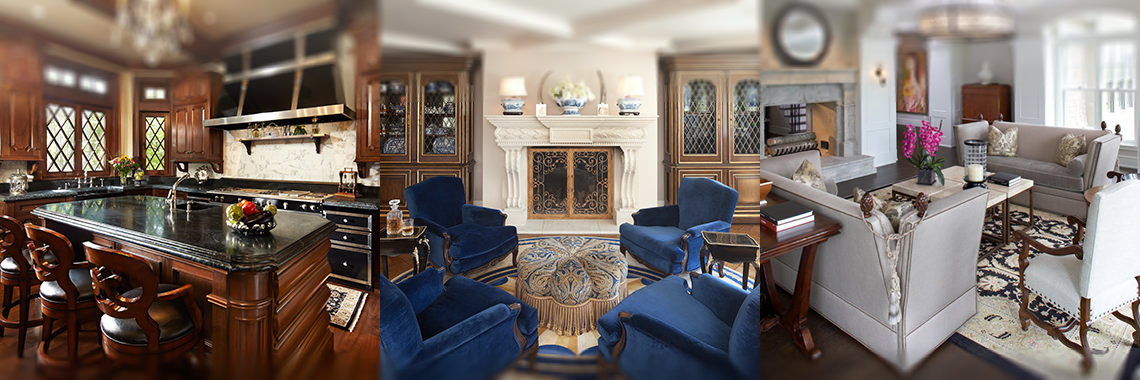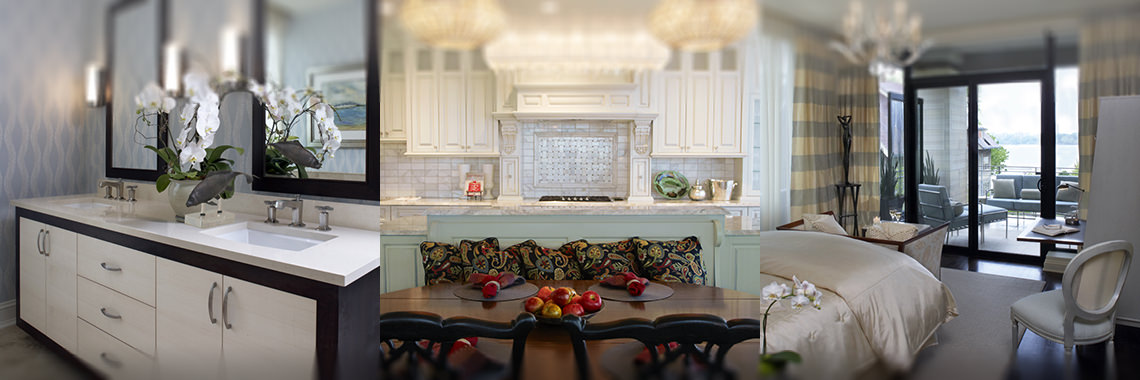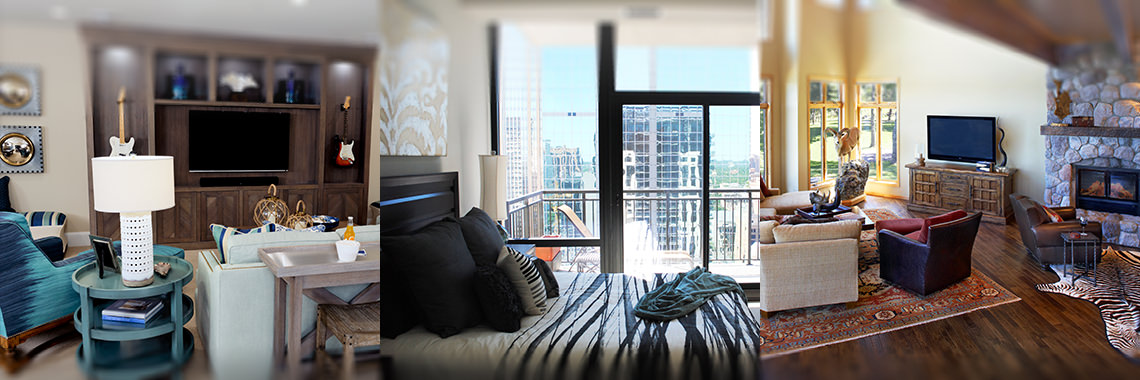Find Your Style

contemporary
Contemporary style furniture is defined as the fashion of today and evokes clean, spare design with well-thought out, edited placement and asymmetric accessorizing. As a general rule, form will most often follow function in contemporary furniture design. Contemporary style furniture can make a strong personal statement by relying on distinctive line, form, and composition. Lines may be straight or curvilinear, vertical or horizontal. Colors may be bright and bold or subdued and sophisticated.
View contemporary style projects.
traditional
Traditional style is timeless and classic, evoking feelings of calm and order. For many people, it is simply what feels like home. Furniture exhibits time-honored lines and understated detail and often incorporate decorative elements. Edges are soft, smooth, blending into the whole composition. In general, a traditional room will use a mix of vertical lines with more restful horizontal lines. Gentle curves may be seen in furniture, pillows, and accessories. Accessorizing may be more layered, but not necessarily. In recent years, traditional design has also become refreshingly unpredictable, becoming more crisp and clean and incorporating a more current attitude.
View traditional style projects.
transitional
Transitional furniture style bridges the span between traditional and contemporary furniture with straight or rounded lines that are less elaborate than traditional but less severe than some contemporary furniture looks. The result is often a sophisticated simplicity of design. This look can be achieved with an eclectic blending of comfort and fashion, finishes, furniture materials and fabric. The result is a uniquely individual décor.
View transitional style projects.
casual
Casual furniture styles mirror the dominant trend in American lifestyle. It is homey, warm, comfortable, and inviting, providing ultimate feet-up comfort. Casual styles often incorporate traditional as well as contemporary furniture design roots. The look may be free spirited and natural, with a touch of whimsy or it may represent a philosophic outlook - like the Arts & Crafts Movement. Most casual rooms exhibit simple details, textured elements in fabrics and accessories, restful horizontal lines, soft upholstery, low-luster surfaces, and arrangements that avoid perfect symmetry.
View casual style projects.